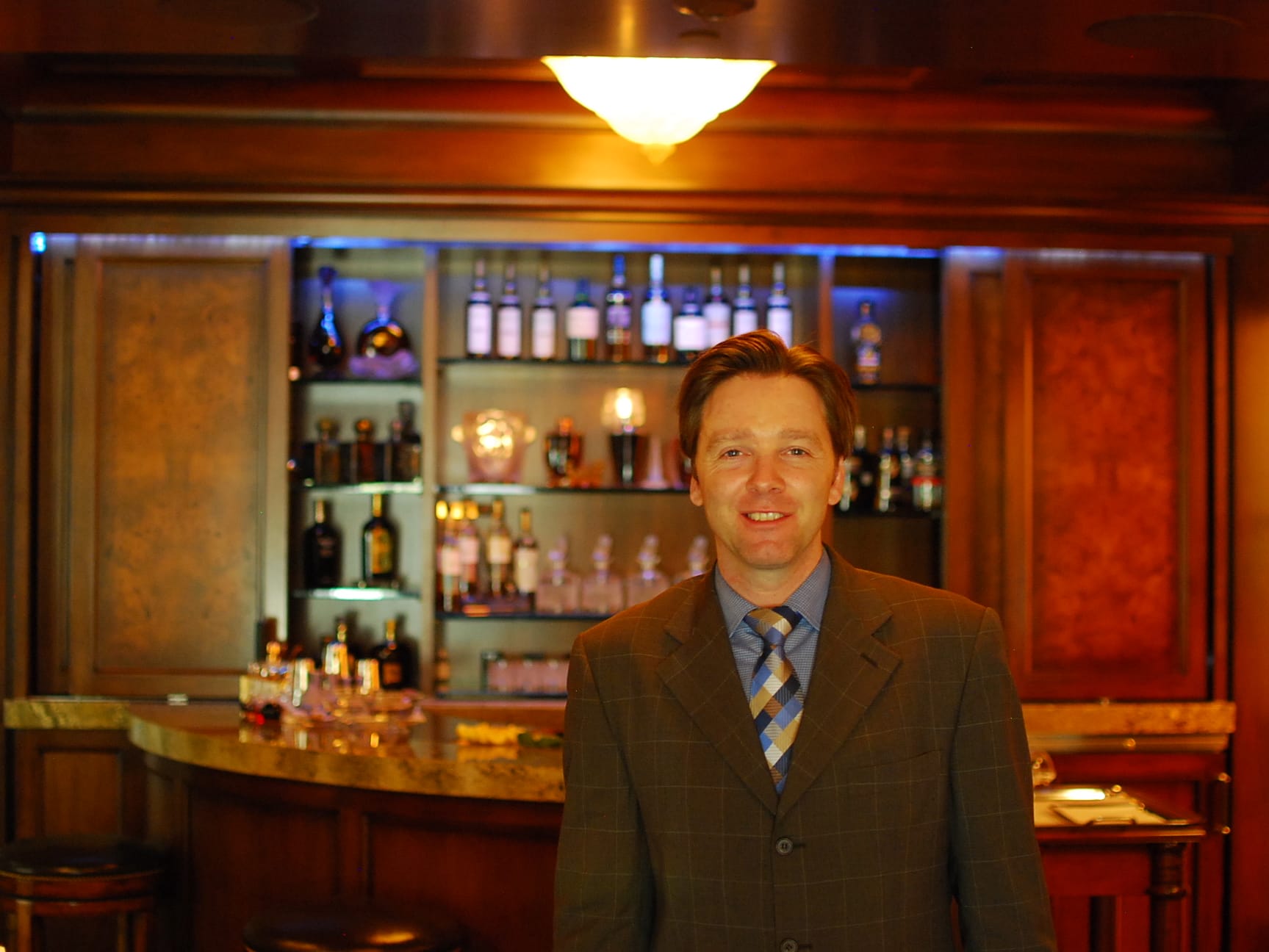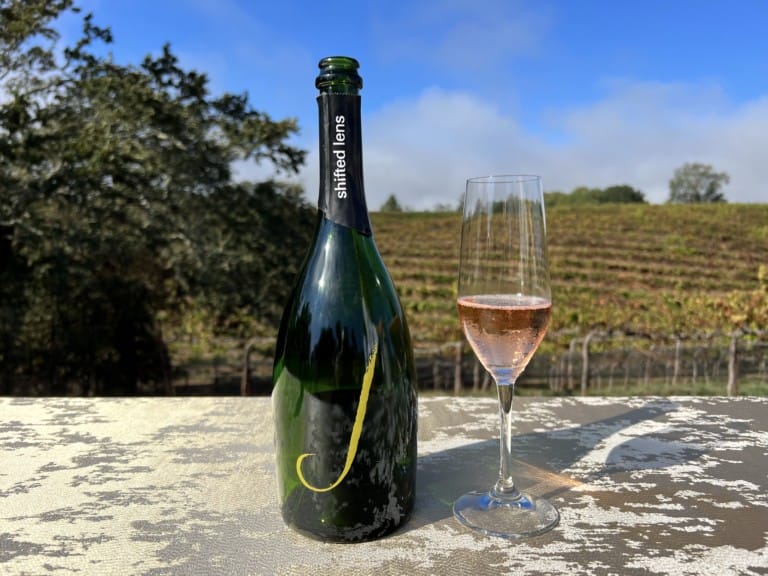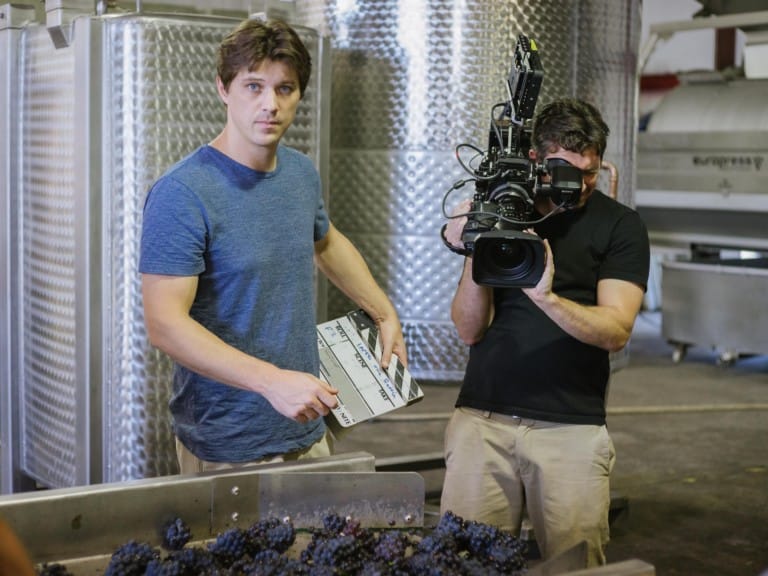INTERVIEW CONTINUED FROM PREVIOUS PAGE
JL: What are a few important things to keep in mind when pairing wine with food?
DA: If you can pull off something very neutral, something that doesn’t clash with the other, what I call the Switzerland, that’s fine. It doesn’t really change anything, it doesn’t really enhance anything, but for the most part, it doesn’t really make anything worse. But you have to watch out for the trainwreck, because there are some wines and relationships to constituents that react badly with certain foods.
JL: What’s an example?
DA: A lot of green vegetables, for instance, have a certain enzyme in them that reacts with tannin molecules in a lot of red wines, or fish oil is another example. Fish oils react very badly to a lot of tannic red wines. Tannin in general. When I mean badly, there’s a reaction in the flavor that tastes quite metallic to most people’s tastes. Some people actually mind that. That’s the beauty of being individual. We all have different thresholds and sensitivities to taste, and I used to have this guy who would come into Aureole back in the day, and he would love to get Opus One, the most recent vintage, a very tannic red wine, and he loved it with his Beluga caviar. Great. A lot of times for a lot of people’s tastes, that’s one of those trainwrecks, but there are always exceptions to the rule. He loved it. Excellent. But for the most part we try to shy away from stuff like that. So heavily tannic wines and really oily fish, bad idea for most people’s tastes. That’s just one example.
JL: Are there any misconceptions about wine that you would like to address?
DA: Ah, jeez, where do I start? More expensive is not better. Knowing what you like as a reference point is so much more beneficial that listening to somebody else’s taste preferences, because again, as I just mentioned, everyone has a very specific preference of taste. If you find something that you like, you don’t have to sit there and think too much further. You don’t have to break it down or overanalyze it, but I would suggest, everyone has a camera phone these days. Take a picture of it, for crying out loud, or write it down. Whatever you have to do to remember it. Then the next time you’re out at another restaurant or retail shop, whatever it may be, look for something from that place. I don’t know, maybe you like that German Riesling. It’s got a nice sweetness to it, but it’s not so sweet. Okay great, take a picture of that one, go to your retailer with your reference point, go to a restaurant, same thing, and go from there. Then try to ask if there are other styles of wines that they offer that are kind of similar. Well, you know what, we don’t have a German Riesling, but there’s this Chenin Blanc, this Dubonnet that’s got some sweetness to it. Try it. Oh, I like that too. You start to learn through basically listening to salespeople and if they don’t have the specific thing you’re looking for, alternatives, because in that way you actually start to grow outside of – I love California Chardonnay, I’m going to get California Chardonnay, and that’s it. After awhile, most people – generally speaking – want to explore and try new tastes. Variety’s the spice of life, right? At the same time, you don’t want to risk getting burned, that someone’s going to recommend you a $150 bottle of wine that you’ve never tasted and you’re not necessarily very comfortable with that. It’s getting over those little bridges. Sometimes it’s better to just with a less costly bottle of wine, explain it and talk about the food pairing with it and make sure that it’s something that would work nicely.
JL: What do you look for with a wine list at other people’s establishments?
DA: Great selection, great pricing, or competitive pricing, and making sure if they have programs that specifically work with synergizing food, certain pairing dishes, excellent. Ways to promote people to not only find things they’re comfortable with, but also ways to find things they may not be as comfortable with at the right price points. Those are some general rules that I look for.
JL: How much value do you see in using a 100-point scale when rating wine?
DA: Very little. I’ve never been an advocate of the 100-point system. As a reference point, it’s helpful to some people, but I think it’s quite dangerous. It’s dangerous in the sense that for years now, certain wine critics get a lot of power by using this scale system, or what they say is the beginning and the end of it, and that’s unfortunate, because what that’s actually done is, in the wine business, these people now have so much power in terms of what they say that their particular taste and their palates are now the main thing that seem to be the criteria. What’s important is that a lot of winemakers now that used to make a certain style of wine, that couldn’t get good ratings, are not adjusting the way they make their wines and tailoring them to the specific profile and preferences of those critics. So what’s happening is they’re losing a little sense of their identity. They’re losing their what makes them distinct, what makes them special in their place in the world, and I think that’s a shame, because we have homogenization more in the world of wine, where we’re so diverse in different parts of the world, representing a certain profile and taste, and it’s been that way for some time, that’s a shame. I think a lot of it has to do with people, whether they understand it or not, it’s empowering certain critics and what they think about certain wines. And based on this 100-point scale, it’s basically like being back in school. “Oh, I’m just going to drink 95-point wines.” That’s silly. A lot of wines, unfortunately, or unwillingly, a lot of people will go out and drink those wines far too young, because a lot of 95-point wines means that it should be aged until it really sees its best time. I’m not a big believer in that system. Again, I believe in empowering people to their own tastes. I believe that absolutely what you like is perfect, and don’t let anybody else tell you otherwise. My wife has a completely different palate than me. We agree to disagree, and that’s the beauty of it. Something for everyone, that’s the idea.
JL: What was the last trip you took with a wine component?
DA: The last trip would have been Portugal. I was in Portugal in the Douro Valley and Lisbon, it would have been about four months ago. That was the last one I did. I even did see some Asian vineyards as well, in China, about six months ago. I was over there. The last real one would have been Portugal.
JL: How did that trip end up influencing your approach?
DA: A few ways. There’s a particular region that I’m fond of called the Dão, which is a little south of the Douro, where they’re famous for making Port wines, but they’re also making great still red wines and whites there, but just to the south of that Douro river, and slightly to the west, is the Dão region, which is a little bit lesser known, but makes outstanding wines, great values. I’ve done a few articles that I’ve written for a few publications in order to help them to promote some of their wines because these are small family estates for the most part. There aren’t a lot of large corporate businesses, so it’s not so much about making a lot of quantity. It’s mostly about these small family estates in the hills and the landscape, you just can’t produce a lot of wine. It’s not flat, so you can’t just industrialize it and make a bunch of vineyards and a bunch of wine of maybe a little lesser quality. It’s not like that. It kind of reminds me of parts of Italy, where it’s rolling hillside landscape and smaller families, and they’re really been doing it for some time, so they’re really about quality, for the most part, and great values, because a lot of those wines are drunk in the region or other parts of close-by Europe. They’re happy with that. They don’t really need a lot of production or tons of money. It’s really about the love of what they’re doing.
JL: How many of those wines factored into your lists here?
DA: Actually, we have a few right now that are on the master list now. Yeah, absolutely. It’s interesting because here at Scarpetta, we’re very Italian driven with Scott Conant and their philosophy, which is excellent. I think we offer a great Italian experience. Our list shows a little bit of wines from regions all around Italy, and we also carry some things from all different environments. From the main wine growing regions in the world, we have different representations. What I’d like to do is expand on some of them and hopefully spread out the diversity a bit. We are pretty heavy right now in terms of domestic wines, which is understandable, being from California, and demand is high for California wines. That’s here, but I’d also like to expand their horizons as well into some other regions, because we have classics, we have a lot of French, a lot of Italian, but I think if we can also get some Spanish, that would be great.
JL: Where and what do you like to drink when you’re not working?
DA: Beer. I definitely like German beer a lot. I have German in my blood, so I’m big on that, but I also love crisp clean white wines, especially wines from warmer environments. In Los Angeles in the summer, I’m definitely interested in dry style roses, or German Riesling. I love those wines, but there are a number of different things out there. For me at this stage of my career, I just enjoy a good glass of wine with the right food. My wife’s a chef, so when we’re going to get together and do something either for each other or for friends, I just want to pick the right wine for the accompaniment for the food. That’s the basic thing.
JL: Where do you enjoy drinking these white wines or German beers?
DA: Usually at home, or with the beers, usually more with friends when we go out and socialize here or there, but I haven’t – frankly, I’ve only been in Los Angeles for a couple months – so it’s getting together with friends at their houses. In a couple instances, restaurants, more in the downtown Los Angeles area.
JL: How are you able to maintain balance in your life, if you’re even able to?
DA: I don’t know if there’s an answer for a lot of people in this day and age. I think for the most part, for me, I get up and usually check my e-mail. I have an established network of groups of people, we trade information with each other, so I’ll check that and get any updates on things. There are certain websites that I like to check in terms of the wine world, see what kind of updates or blogs are going on out there, add a little something when I can, and just keeping up with teaching, teaching with the Court of Master Sommeliers. Reviewing those types of examinations, acting as one of the examiners, and mentoring with people. There are a couple people here in the market working on high-level examinations, so I’m working with them on their blind tasting skills and theoretical practices. We even have interns who are coming through Montage working with them daily and teaching them a little bit about beverage. It’s a very good thing to give back, and I really enjoy that part of it. So finding a balance, a little bit of time, I try to do about an hour in the morning of making sure that I’m on top of what’s happening out there, if I can, a little bit of time each day. Because there’s no way you can really approach it any other way, because if you take a break with the world of beverage, in general, for a year, it’s going to take you probably two or three years to get back where you were, because so much changes so quickly. Everything’s in motion simultaneously. It’s a lot to keep on top of, so a little bit at a time, with persistence and consistency, you’re going to be okay. Otherwise you’ll lose track.
JL: What are the websites and blogs you regularly check out?
DA: There are a number of them. Dr. Vino’s blog, he’s great. I like a lot of what he was talking about, and what he talks about, but I go a lot of times, first and foremost, to regulatory bodies of different countries, because when it’s talking about wine laws of changes of what’s happening in certain regions, it will be released there first. A lot of times I’m working for facts and information on that because when I’m teaching about certain places, I want to make sure that I’m up to date with that. Definitely the Court of Master Sommeliers has another sister body called the Guild of Sommeliers, and we’ve recently in the last couple years started a website that’s really been excellent. It’s really drawn a lot of influence from not only sommeliers but also business professionals or individuals who have interest in wine in general. Go to the website, become a member and there’s a lot of things happening, a very good website, all sorts of blogs and a very good community for information that’s out for there, partly from members and partly from other individuals who are inquiring about information. It’s a great source because it’s much more up to the moment rather than relying on a book that’s one year old that’s been published and half of that information’s changed. Clearly we’re in that information age where things change very quickly.
JL: If you had to fill your glass with only one more wine, what would be in the glass?
DA: Probably Madeira…Something from the 1800s would be great, if you can still get it. It’s still out there, but probably from 1850, and probably Verdelho. I like Verdelho the most, personally. I guess if I was on a desert island, that’d probably be the first thing that pops to mind. I’d probably need it to because I’d realize I’m on a desert island, and you might as well enjoy the last moments.
JL: What food would you pair with it?
DA: Nothing, or cheese. For me, a great Madeira with that much age, and a lot of complexity, by itself, but it works so well with cheese, because Madeira, when you think about it, how would you describe it? Basically the way they make it is semi-cooked. They cook the must down a little bit, reduce it, so it’s like concentrated fruit with some mineral and some other things. It’s got somewhere between a light and moderate amount of sweetness. It’s very complex flavors, but if you think about it, it’s like dried fruits with cheese and nuts. It’s got a little nuttiness to it too, with oxidation. It’s like you’ve got all that wrapped up with cheese, it works for me.









Leave a Comment